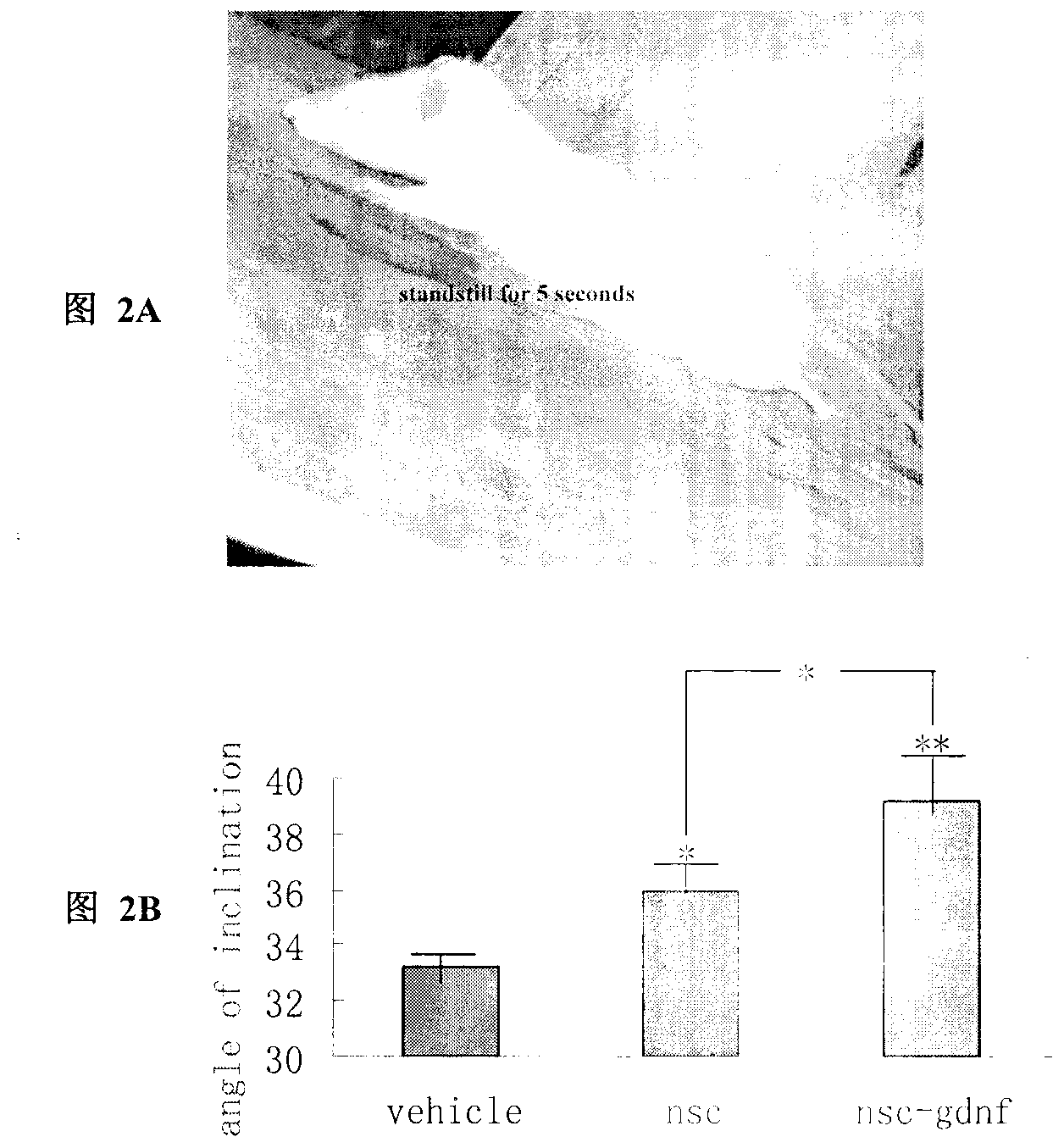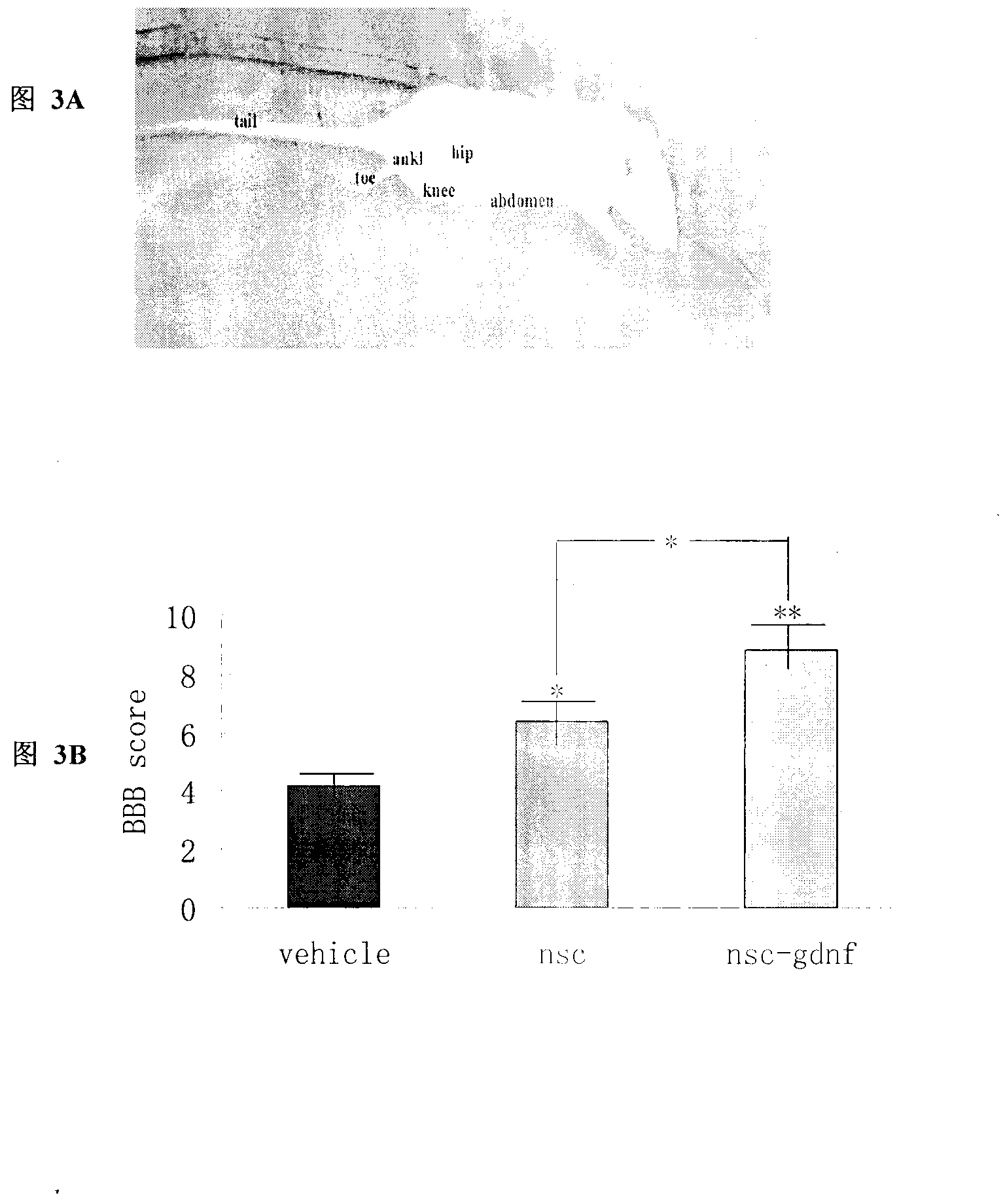Treatment of spinal cord injury by transplanting stem cells modified by neurotrophic factor gene
A neurotrophic factor and neural stem cell technology, applied in the field of biomedicine, can solve the problems of non-neural tissue, non-proliferative neurons and less integration of host cells.
- Summary
- Abstract
- Description
- Claims
- Application Information
AI Technical Summary
Problems solved by technology
Method used
Image
Examples
Embodiment Construction
[0012] (1) Preparation of transgenic neural stem cells (see the invention patent "Construction of embryonic neural stem cells genetically modified by glial cell-derived neurotrophic factor", application number: 201210016282.5), briefly: first construct the target gene GDNF and the retroviral vector pLNCX2 The supernatant of packaging cells pT67 was used to infect embryonic neural stem cells, and the embryonic neural stem cells GDNF-NSC modified by glial cell-derived neurotrophic factor were obtained by G418 selection s .
[0013] (2) Spinal cord injury model production, according to Tator spinal cord injury production method: 200 grams of clean grade female SD rats, 2% pentobarbital sodium (60mg / kg) intraperitoneally anesthetized the animal for about 15-20 minutes, shaved back T8 hair in the vicinity. Disinfect the skin with 75% alcohol, incise the skin and separate the muscles until the spinal canal is completely exposed. Use a rongeur to bite off the T8 spinous process, an...
PUM
 Login to View More
Login to View More Abstract
Description
Claims
Application Information
 Login to View More
Login to View More - R&D
- Intellectual Property
- Life Sciences
- Materials
- Tech Scout
- Unparalleled Data Quality
- Higher Quality Content
- 60% Fewer Hallucinations
Browse by: Latest US Patents, China's latest patents, Technical Efficacy Thesaurus, Application Domain, Technology Topic, Popular Technical Reports.
© 2025 PatSnap. All rights reserved.Legal|Privacy policy|Modern Slavery Act Transparency Statement|Sitemap|About US| Contact US: help@patsnap.com



